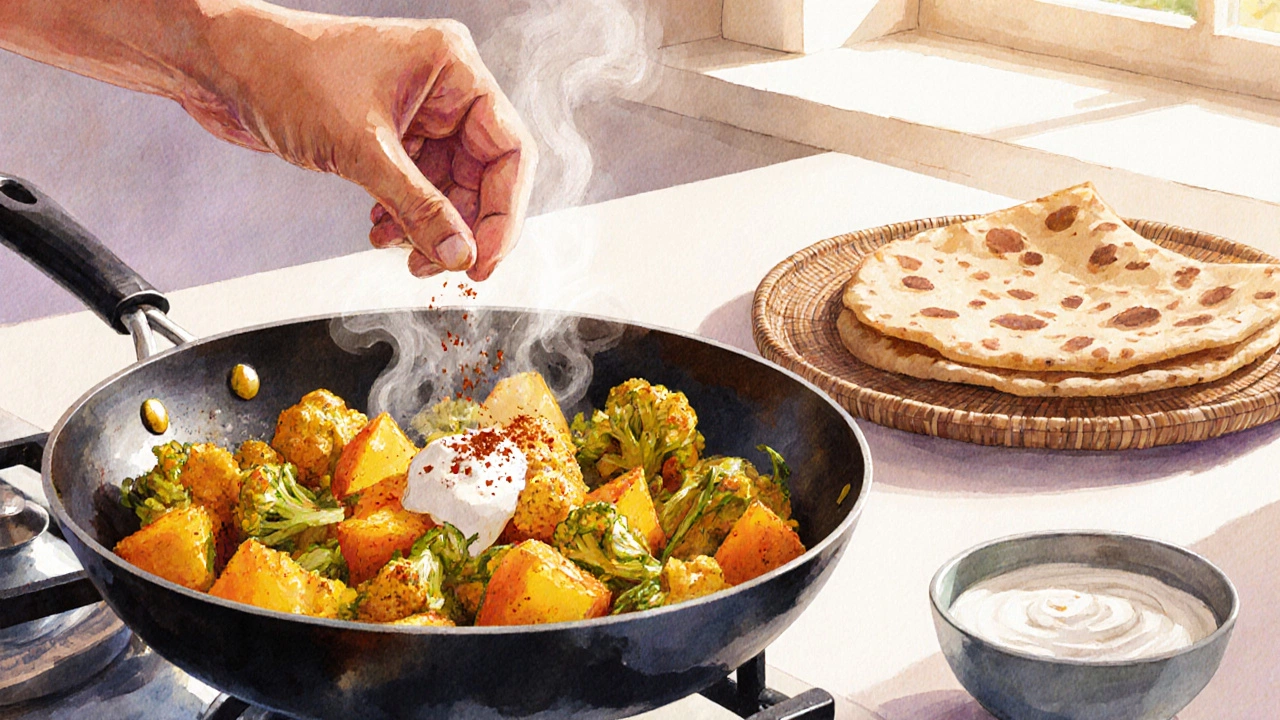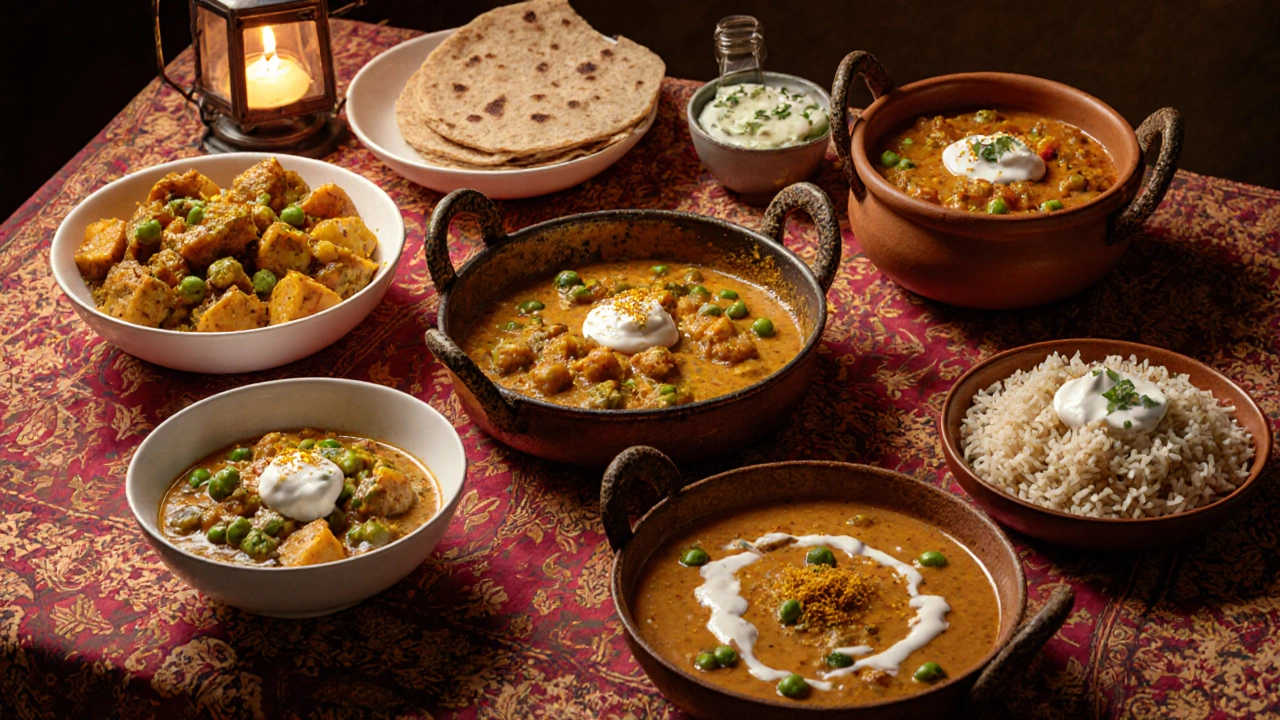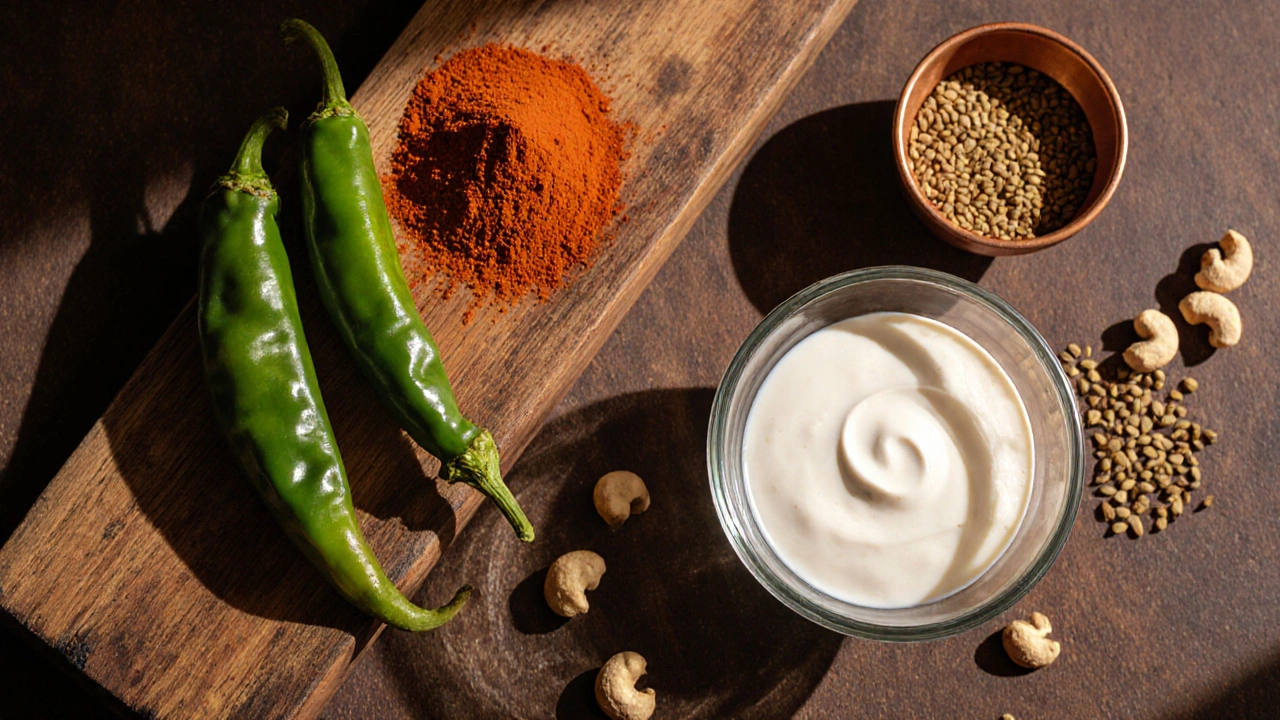Mild Indian Dish Calculator
Discover how to adjust any Indian dish to your desired heat level. Select a dish from the list, then use the slider to indicate your heat tolerance. Get personalized adjustments to make it perfectly mild for you.
Your Milder Recipe Adjustments
When you crave Indian flavors but can’t handle heat, finding the least spicy Indian dish feels like searching for a needle in a haystack. Indian cuisine is famous for its bold chilies, yet many recipes rely more on aromatics, cream, and nuts than on fire. Below you’ll discover a handful of genuinely mild dishes, learn how to judge a recipe’s heat, and get practical tips to keep the spice meter low without losing the heart of Indian cooking.
Understanding What Makes a Dish Mild
Spiciness in Indian food usually comes from three sources: fresh chilies, dried chili powder, and the spice blend called garam masala is a mix of warmed spices like cinnamon, clove, and cardamom that adds depth without heat. Fresh green chilies and red chili powder contribute the burning sensation most people associate with Indian meals. If a recipe lists only a pinch of chili powder or omits fresh chilies altogether, it’s a good sign the dish will stay gentle on the palate.
Another clue is the presence of dairy or nuts. Ingredients like cream, yogurt, coconut milk, cashews, or almonds naturally tame heat. Many regional cuisines-especially from the North-use these to build a silky sauce that balances the spices.
Key Strategies to Reduce Heat in Any Recipe
- Control the chilies. Reduce fresh chilies to a quarter of the amount called for, or leave them out entirely. Use mild varieties such as bell pepper for color and a hint of sweetness.
- Swap chili powder. Replace the hot cayenne or Kashmiri chili powder with paprika or smoked paprika for color without the burn.
- Boost dairy. Stir in a dollop of plain yogurt, a splash of cream, or a handful of grated paneer toward the end of cooking.
- Incorporate nuts. Blend soaked cashews or almonds into the sauce; the resulting puree adds richness and smooths out any lingering spice.
Following these tweaks, even a traditionally fiery recipe can become a comforting, mild option.
Top Mild Indian Dishes You Can Trust
Below are six classic dishes that are naturally low on the heat scale. Each entry includes a brief definition, core ingredients, and a tip for keeping the flavor mellow.
Aloo Gobi is a dry stir‑fried cauliflower and potato dish flavored with turmeric, cumin, and a tiny pinch of mild chili
- Heat control: Omit the green chilies and replace chili powder with a pinch of smoked paprika.
- Serving idea: Pair with soft whole‑wheat roti for a balanced meal.
Navratan Korma is a creamy vegetable curry studded with nuts, raisins, and a light cashew‑based sauce
- Heat control: Use a mild curry powder and skip the red chili flakes.
- Serving idea: Serve over fragrant basmati rice to let the gentle sauce shine.
Matar Paneer is a tomato‑based gravy with peas and soft paneer cubes, often seasoned with just a whisper of green chili
- Heat control: Remove the chilies; add a splash of cream at the end for extra smoothness.
- Serving idea: Top with fresh cilantro and serve with garlic naan.
Dal Tadka (Mild Version) is a lentil stew tempered with cumin, mustard seeds, and a tiny amount of chili for a subtle kick
- Heat control: Reduce the whole‑spice tempering to half the usual amount and add a dollop of yogurt before serving.
- Serving idea: Pair with fluffy steamed rice or millet.
Vegetable Biryani (Mild) is a layered rice dish cooked with mixed vegetables, saffron, and a fragrant yet mild spice blend
- Heat control: Use a biryani masala that omits chili, and add a few strands of saffron soaked in warm milk for aroma.
- Serving idea: Accompany with a cool cucumber raita.
Malai Kofta is soft vegetable or paneer balls simmered in a rich, creamy tomato‑onion gravy
- Heat control: Skip the green chilies in the gravy; finish with a swirl of fresh cream.
- Serving idea: Great with naan or paratha for a festive feel.

Quick Comparison of Mild Dishes
| Dish | Heat Level | Key Ingredients | Typical Pairing |
|---|---|---|---|
| Aloo Gobi | Very mild | Cauliflower, potatoes, turmeric, cumin | Whole‑wheat roti |
| Navratan Korma | Mild | Mixed veggies, cashews, raisins, cream | Basmati rice |
| Matar Paneer | Low | Paneer, peas, tomato, cream | Garlic naan |
| Dal Tadka | Low | Lentils, cumin, mustard seeds, yogurt | Steamed rice or millet |
| Vegetable Biryani | Low | Rice, mixed veg, saffron, biryani masala | Cucumber raita |
| Malai Kofta | Very mild | Veg/Paneer balls, tomato‑onion gravy, cream | Naan or paratha |
How to Customize Any Indian Recipe for Mildness
- Read the spice list. Identify fresh chilies, dried chili powder, and any hot pepper sauces.
- Reduce or omit the chilies. If a recipe calls for 2 green chilies, try ½ or none.
- Swap hot powders for milder alternatives like paprika or sweet pepper powder.
- Add dairy or nuts. A spoonful of yogurt, a splash of coconut milk, or a handful of soaked cashews can neutralize any residual heat.
- Finish with a garnish of fresh herbs-cilantro, mint, or a squeeze of lemon-to brighten the dish without heat.
These steps work for both vegetarian and non‑vegetarian dishes, letting you enjoy the complex flavors of Indian cooking without the burn.

Common Mistakes to Avoid When Seeking Mild Flavors
- Relying on “mild” labels alone. Some menus label a dish mild but still use a hidden chili paste.
- Removing all spices. Spice isn’t just heat; it’s also aroma. Keep cumin, coriander, and fennel for depth.
- Skipping the finishing dairy. A final swirl of cream often makes the difference between tolerable and enjoyable.
Frequently Asked Questions
Can I make a mild version of a traditionally spicy dish like Chicken Vindaloo?
Yes. Cut the chilies to a quarter, replace the hot vindaloo paste with a milder tomato‑onion base, and finish with a spoonful of yogurt. The result keeps the tangy flavor but drops the heat dramatically.
Is it safe for kids to eat these mild dishes?
Absolutely. The dishes listed contain no hidden chilies and rely on creamy or nut‑based sauces, making them kid‑friendly while still offering authentic Indian taste.
How do I know if a store‑bought spice mix is too hot?
Check the ingredient list for chili powder, cayenne, or “red chili”. If those appear near the top, the mix is likely spicy. Choose a “mild” or “sweet” blend instead.
Can I freeze any of these mild dishes for later?
Yes. Most of them - dal, korma, biryani, and kofta - freeze well. Store in airtight containers and reheat gently on the stove, adding a splash of cream or yogurt if the sauce looks dry.
What side dishes complement these mild mains?
Cool yogurt‑based raita, fresh cucumber salad, or simple cucumber‑mint chutney provide refreshing contrast and keep the overall meal gentle.
With these options in your kitchen, you no longer have to choose between flavor and comfort. Explore the mild dishes, adjust the heat to your liking, and enjoy Indian cuisine on your own terms.
